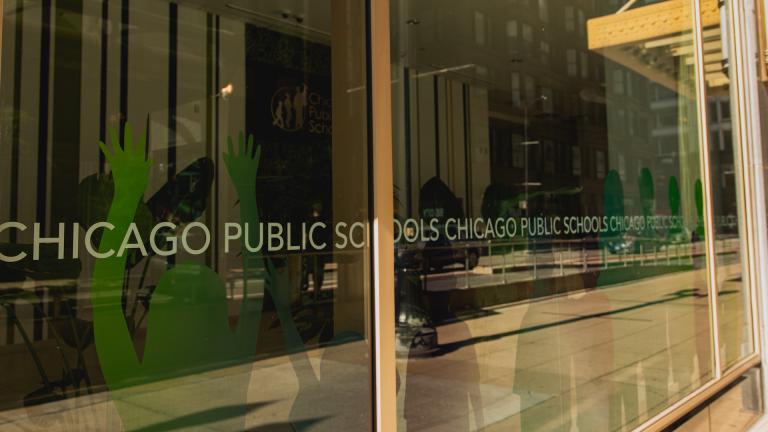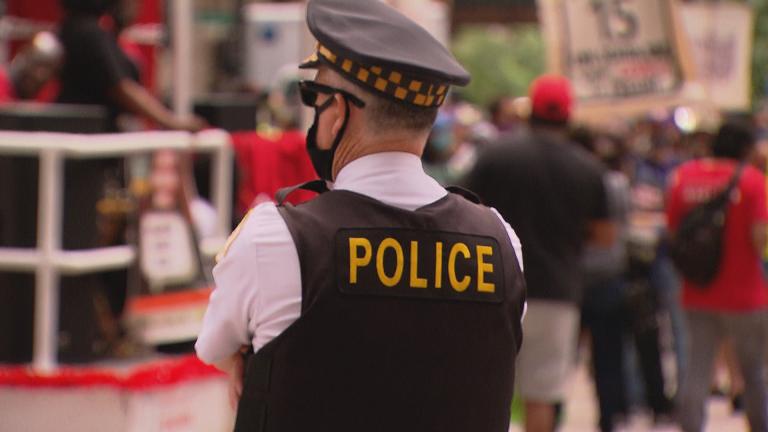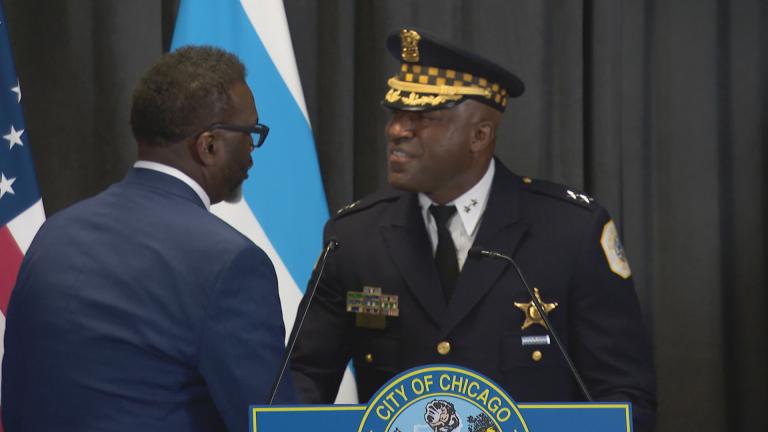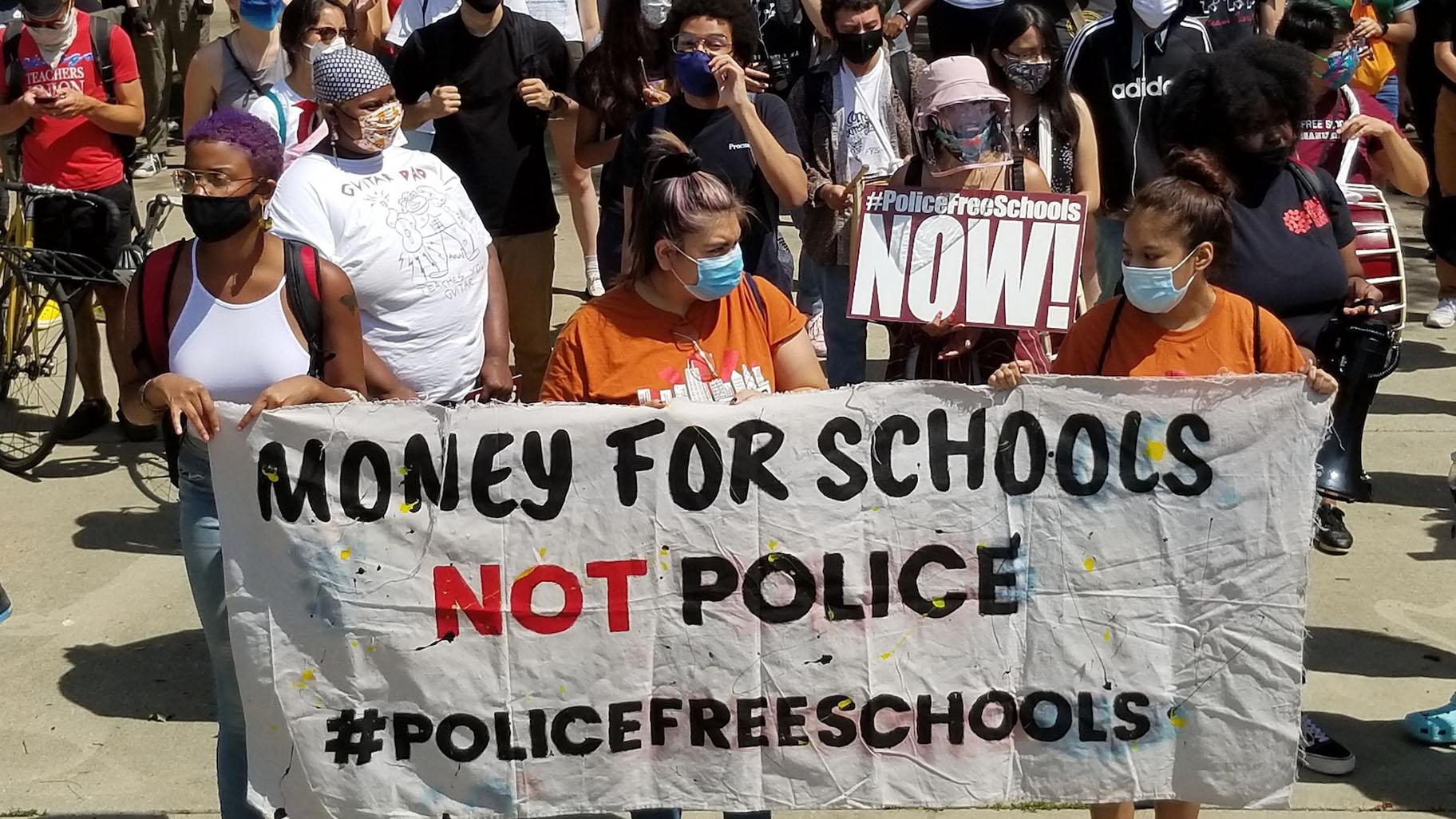 Youth activists organized a peaceful march to Mayor Lori Lightfoot’s home on Aug. 13, 2020, to demand the removal of resource officers from Chicago Public Schools. (Matt Masterson / WTTW News)
Youth activists organized a peaceful march to Mayor Lori Lightfoot’s home on Aug. 13, 2020, to demand the removal of resource officers from Chicago Public Schools. (Matt Masterson / WTTW News)
As Chicago Public Schools prepares to eliminate resource officer positions districtwide, a new study found removing police from city schools has not led to increased disciplinary issues, nor did it make students and staff feel less safe.
The University of Chicago Consortium on School Research on Wednesday published a new report examining the impacts of removing resource officers from Chicago public high schools.
“We found teachers’ and students’ reports of their sense of safety did not change significantly after the removal of SROs, based on their responses on 5Essentials Surveys,” Amy Arneson, lead author of the report and a senior research analyst at the Consortium on School Research, said in a statement.
Chicago Public Schools in 2020 began allowing local school councils to decide whether they wanted to retain or remove their school resource officers, following a student-led push to eliminate police from schools.
According to the report, the removal of SROs was significantly related to having fewer high-level discipline infractions.
While the number of those infractions rose districtwide between the 2018-19 and 2022-23 academic years, the numbers remained relatively flat in schools that fully removed their resource officers.
“At the school level, the typical number of high-level disciplinary infractions in schools that retained both SROs was 118 in 2018–19 and 173 in 2022–23, an increase of 55 high-level infractions,” the report states. “In schools that fully removed SROs … the typical increase over time was just 13 (from 116 in 2018–19 to 129 in 2022–23) which is 42 high-level infractions lower than the expectation if there was no effect of SRO removal and is statistically significant.”
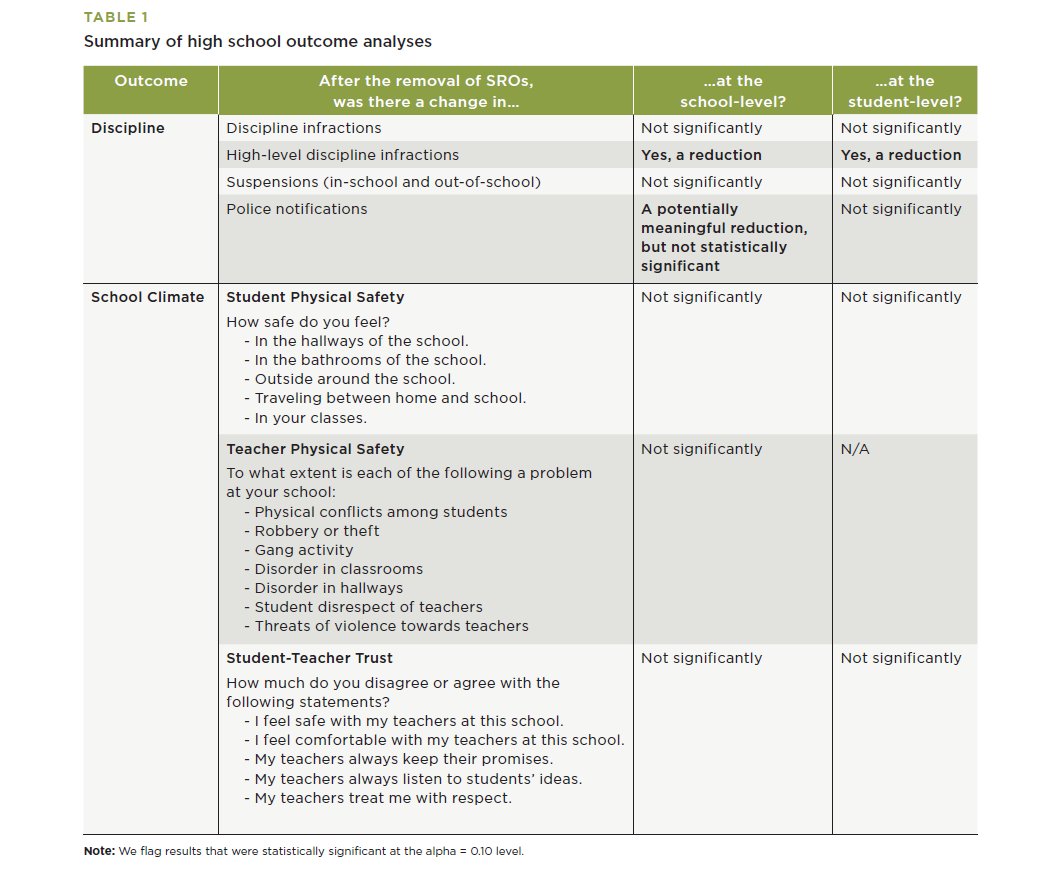 (University of Chicago Consortium on School Research)
(University of Chicago Consortium on School Research)
During the 2022-23 academic year, high schools that fully removed their SROs saw a steeper decline in the number of police notifications than schools that retained their SROs, but the report said that difference was not statistically significant.
Researchers also examined teacher and student responses on the district’s annual 5Essentials survey and found that removing SROs was not related to changes in students’ perception of physical safety or student-teacher trust.
The report also looked at the student makeup of schools that kept or removed SROs. The researchers found schools that retained both SROs in 2022–23 were more likely to serve predominantly Black students and tended to have higher levels of suspensions compared to schools that removed both SROs.
In total, there were 57 SROs working at 39 district schools this past academic year. But the Chicago Board of Education is expected to soon approve a new district safety plan that would fully eliminate the use of SROs.
“The shift away from SROs and toward the Whole School Safety framework represents a significant change in how the district approaches school safety,” Arneson said in a statement. “We hope this research can help CPS leaders, community partners, students, families, and community members understand this shift.”
A Safer City is supported, in part, by the Sue Ling Gin Foundation Initiative for Reducing Violence in Chicago.
Contact Matt Masterson: @ByMattMasterson | [email protected] | (773) 509-5431

